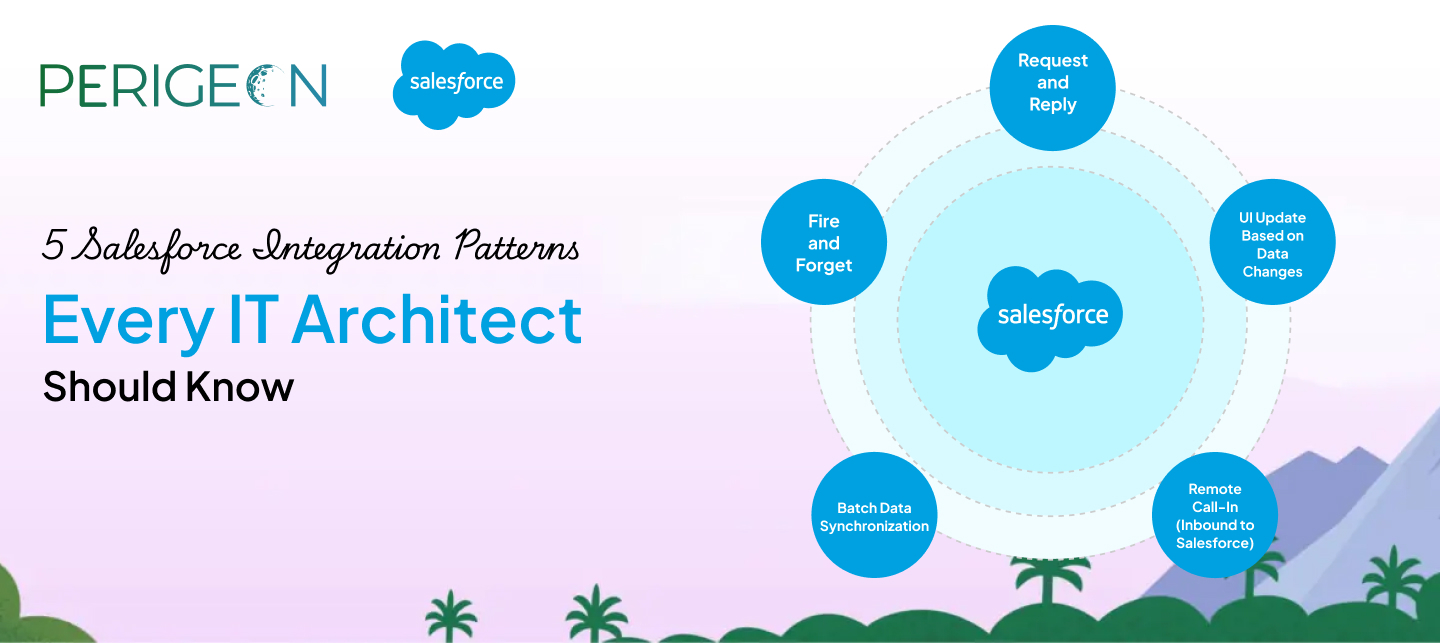Introduction
In today’s digital ecosystem, Salesforce rarely operates in isolation. Businesses depend on a connected stack of ERP, HR, finance, e-commerce, and customer service platforms — and Salesforce must integrate seamlessly with all of them to maximize value. For IT architects, understanding the right integration patterns is crucial for building scalable, reliable, and cost-effective solutions.
Here are five Salesforce integration patterns every IT architect should know, explained in clear business and technical terms.
1. Remote Process Invocation — Request and Reply
This pattern is ideal when Salesforce needs to call an external system and wait for a response in real-time.
- Use case: A sales rep checks product availability from an ERP system while creating a Salesforce opportunity.
- Business benefit: Ensures quick decision-making with accurate, up-to-date data.
2. Remote Process Invocation — Fire and Forget
Sometimes, Salesforce only needs to send a request without waiting for a response.
- Use case: Sending a notification to a billing system when a new contract is signed in Salesforce.
- Business benefit: Improves speed and reduces system dependencies.
3. Batch Data Synchronization
When large volumes of data need to be exchanged, batch processes are the way to go.
- Use case: Syncing customer records nightly between Salesforce and an ERP system.
- Business benefit: Keeps systems aligned without overloading APIs.
4. Remote Call-In (Inbound to Salesforce)
Here, an external system initiates a process in Salesforce.
- Use case: An e-commerce platform pushes new orders directly into Salesforce for fulfillment.
- Business benefit: Automates workflows and reduces manual entry.
5. UI Update Based on Data Changes
This pattern ensures the Salesforce user interface reflects changes happening in external systems in near real-time.
- Use case: A service agent sees updated shipment status from a logistics system within Salesforce Service Cloud.
- Business benefit: Provides agents and customers with real-time visibility, improving experience and trust.
Conclusion
Selecting the right Salesforce integration pattern depends on business needs, data volumes, and system dependencies. Done right, integration transforms Salesforce from a standalone CRM into the central hub of your digital ecosystem.
At Perigeon Software, we specialize in designing and implementing Salesforce integration strategies that ensure scalability, reliability, and business impact.
👉 Ready to simplify integrations and maximize Salesforce ROI? Our experts are here to help.






